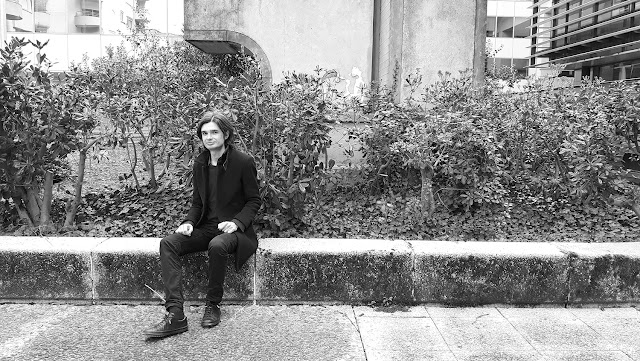If you're following closely, you will already know that throughout the lockdown period, over on Instagram and Twitter, Invisible Bordeaux has been publishing random photos taken over the years in and around the city, and sometimes beyond. Some have already featured on the blog, others have just been sitting on my hard drive. There's no major underlying theme, they're just photos that possibly deserved to be dusted down and put out there! The first two sets can still be viewed by clicking here and here, and on this page you can views numbers 21 to 30, starting above with this inside view of Marché de Lerme in the Saint-Seurin quarter of Bordeaux.
It is no longer a covered market but rather a city-owned multipurpose venue that hosts a wide range of exhibitions and events. The original structure dates back to the mid-19th century and was designed by Charles Burguet. It was completely overhauled a few years ago and reopened in its current form in 2011.
Sticking with indoor views of peculiar ceilings, here is one of Gironde’s two surviving “
piscine tournesol” swimming pools; this one is in Braud-et-Saint-Louis to the north of Blaye (the other is in Cestas). The mad design of France’s 183 tournesol swimming pools -
who starred in their own Invisible Bordeaux post a few years ago - was the work of architect Bernard Schoeller, who died a few days ago at the age of 90.
Back in Bordeaux, here is a rear view of one of the city's many
boîte à lire self-service borrow-and-lend bookcases, this one is to be found in
Parc Rivière. Look carefully and you may also spot a prospective customer...
Next up (literally) is part of the Cité Administrative, Bordeaux’s very own skyscraper. The taller of the two towers measures 92 metres (112 metres if you include the antenna on top). Designed by architects Pierre Mathieu and Pierre Calmon, work was completed in 1974.
Wooden posts at what was once the firing range at
Camp de Souge in Martignas-sur-Jalle, where more than 300 executions took place during the Second World War. A few days ago, sadly a horrific forest fire tore through this part of the military camp, it is unclear for now whether the poignant memorial to those who died was destroyed in the fire.
On a much lighter note, here we are inside the
Stadium Vélodrome de Bordeaux Lac, viewing what is officially known as the “Piste cycliste Roger et Guy Lapébie” cycle track. Back in the 1990s, the velodrome was the scene of a number of hour record-breaking endeavours by the likes of Chris Boardman, Miguel Indurain and Tony Rominger.
To retain the sporting theme, here is the
Hippodrome du Bouscat and its magnificent grandstand, for all your local horse-racing needs! When schedules aren’t affected by global pandemics and the like, the racecourse hosts 32 meetings each year, the equivalent of some 230 individual races!
Here is the building on Place du Maucaillou in central Bordeaux where Mitt Romney, the US Republican Senator and 2012 presidential candidate, lived for six months in 1968, when he was a Mormon missionary to France. The story of this pivotal period in Romney’s life is detailed somewhere deep in the archives of the blog!
Below is
Jacques-Yves Cousteau, as portrayed on the plaque positioned on the building where he was born in 1910 in Saint-André-de-Cubzac. After a lifetime spent navigating the seven seas, things came full circle when he died in 1997, as the final resting place of this internationally-renowned underwater explorer and filmmaker is just a short distance away, in Saint-André-de-Cubzac’s municipal cemetery. To people of my generation growing up in the UK in the 1970s, he was arguably France’s biggest celebrity export at that time, along with Sacha Distel…

And we finish off this third random series with another picture taken during a
memorable flight along the Atlantic coast and down the Gironde estuary (
full set available here). This is
Phare de Richard, the 18-metre-tall lighthouse on the Médoc-side bank of the Gironde estuary in Jau-Dignac-et-Loirac. It operated from 1843 until 1870 when it was replaced by a taller structure, which in turn functioned until 1953, by which time shipping navigation methods on the estuary had switched to the use of beacons or buoys. The original, disused lighthouse was renovated by volunteers from 1993 onwards and is now a popular heritage site.
> First selection of random archive photos available here!
> Second selection of random archive photos available here!
> Ce dossier est également disponible en français !













































0 commentaires: